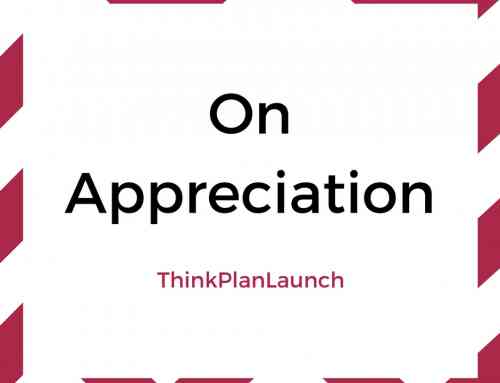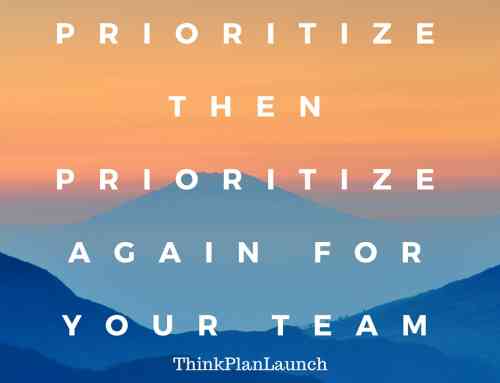Table of Contents
Intrinsic Motivation and Driving Forces
Intrinsic motivation is the primary internal force that causes a person to act. It’s at the core of a person’s thoughts, decisions, and actions. Understanding intrinsic motivation is critical to maximizing your own productivity. Furthermore, understanding the intrinsic motivation of others is crucial to motivating and leading people.
We used to refer to intrinsic motivation factors as “motivators” (and before that “values”). We now refer to intrinsic motivation factors as Driving Forces. The twelve Driving Forces provide a complete, accurate measure of a person’s intrinsic and extrinsic motivation.
When we understand a person’s Driving Forces, we understand WHY they do things. Whereas DISC measures a person’s behavioral style – helping us understand HOW they do things (communicate, interact, make decisions, organize their work, etc.) – Driving Forces goes deeper.
Driving Forces gives us the reasoning behind a person’s working style, career goals, and personal interests. It helps us understand why some people view others as illogical, and vice versa. It gives us a clear window into a person’s priorities, passions, and strengths.
In turn, this allows us to predict job fit and performance with a very high degree of accuracy. It also gives us the exact information needed to motivate someone for their reasons (not ours, which don’t matter to them). It catalyzes a higher level of collaboration and communication across teams. It gives us the ability to help other people the way they want to be helped.
Driving Forces has always been one of my favorite sciences for all of these reasons. It touches at the core of who we are as individuals, and sheds light on our unique dreams – many of which go back to childhood.
You will find people are always working to fulfill their top Driving Forces. If their work does not bring them this fulfillment, expect them to look for it outside of work – perhaps in a hobby, or extracurricular activity.
Additionally, people who are not fulfilling their core Driving Forces at work are at high risk for moving on, since their job is reduced to nothing more than a mere financial transaction – punching a clock and collecting a paycheck.
High Structured (High Traditional)
We may sometimes call the High Structured person a High Traditional. This is because the High Structured person is one who scores high on the Traditional scale.
Key Traits
The High Structured person is driven by their beliefs, proven methods, and order. They are not easily swayed from their defined system of living, or decision-making for that matter. They place a high value on defining, following, and implementing systems to create structure and order. When they believe in something, they will put all of their energy into it – which is they key to unlocking superior performance for this type of person.
You will have a tough time convincing a High Traditional of your point of view, if it conflicts in any way with their principles or beliefs. Their beliefs are at the core of who they are, and they will do what it takes to protect them – and in doing so, ensure consistency for themselves, the people around them, and the organizations they represent. They are your firm “anchors” in an otherwise fluctuating environment.
At Redline
Remember, the High Structured person is governed by their beliefs and principles. The beliefs themselves may vary from one High Structured person to another. While their desire for consistency, order, and principled action is admirable, this also comes with some setbacks.
The High Structured person may break the law if it conflicts with their beliefs. They may throw themselves in front of a bus to advance their cause. Furthermore, the High Structured person can often be perceived as highly judgmental or close-minded towards the views of others. However, these negative factors can often be tempered by developing high emotional intelligence.
Stress Factors
The High Structured individual encounters stress when challenged on their beliefs. These might be religious beliefs or something else altogether. Along these same lines, the High Structured person tends to dislike change, especially if just for change’s sake. Anything that disrupts the even-keel of the established system or hierarchy will make them flustered.
Similarly, a lack of consistency (in their life, or with the people/environment around them) will be perceived as troubling and chaotic. In such a situation, you can expect a High Traditional to do everything in their power to re-establish consistency, order, and agreement with the established system.
Communication Insights
Structure, consistency, order. These are the big things that the High Structured person is looking for in life and work. Explain how taking certain actions will reinforce existing systems, beliefs, or ideas. Refer to past behavior or precedent where necessary, and remind them of the need for consistency. Show them how making a given decision aligns with their fundamental beliefs and principles.
As with any of the Driving Forces, it’s the way you frame your communication that matters – such that the person receiving it understands it in terms of what matters to them, not you. While the High Structured person can sometimes be a stubborn pain in the (you-know-what), when their energies are harnessed in this fashion, they will work long and hard to ensure their cause is advanced.
Management Insights
When managing someone who is a High Structured, be sure to establish a clear set of expectations – a routine for them to follow, if you will – that will not be changing anytime soon. Frequent changes to the High Traditional’s schedule or assignments will cause stress and decrease their productivity. Take the time to learn and understand what their unique personal system is for living, whether it be religious or something else, and be sure their work aligns with their core beliefs.
From a selection standpoint, do not hire a High Traditional if their fundamental beliefs clash with your company culture. If you’re a modern startup that cracks the keg open at 4:30 p.m. sharp every day, you don’t want to hire a High Structured who opposes drinking. On the flip side, you wouldn’t want to hire a High Traditional party animal in a more traditional, quiet, and serious office setting. The fundamental difference in world-view and motivation will result in headaches for all, reduced productivity, and increased turnover.
High Receptive (Low Traditional)
We may sometimes call the High Receptive person a Low Traditional. This is because the High Receptive person is one who scores low on the Traditional scale.
Key Traits
The High Receptive person is driven by new ideas, exploration, and creativity. They are your change agents, always seeking out new/better ways to do things. Many modern tech companies seek highly creative, open-minded types – if this describes your organization, then the High Receptive is exactly what you seek. They can appear disheveled at times but are true leaders and pioneers. While the High Structured is your anchor, the High Receptive is your scout.
The High Receptive type is known to switch brands often, change up their schedule on a whim, and scrap current projects in favor of beginning new ones. Sometimes this can lead them to never finish the things they start; other times it can inspire them with creative bursts of genius that fuel major innovation. It’s no big surprise that many successful entrepreneurs, especially serial entrepreneurs, tend to have a High Receptive driving force.
At Redline
The High Receptive person is creative when interpreting their life, work, and people in it. They will sometimes look for things that aren’t there, though, wasting time going down rabbit holes that lead to nowhere. Because they like to set their own priorities/make their own schedule (and change it often, never “locking” themselves down to anything in particular), their self-management and follow-through skills can suffer.
As mentioned previously, the High Receptive may start projects that they never finish – not for lack of good intention, but simply because another more fresh idea has entered their mind. While this often implicates rapid learning and developmental abilities, it can become a major hindrance if they get nothing done as a result. It’s easy for the High Receptive to get distracted, sidetracked, or caught day-dreaming about the many possibilities that exist… for their work, their life, for anything at all. This is the vague and abstract nature of the High Receptive mind.
Stress Factors
Whereas the High Structured person requires consistency and order to function properly, the High Receptive person needs just the opposite: more freedom, less (or no) restrictions as to work methods, and the ability to be creative in their work. Put them into a mundane, routine, or repetitive situation and they’ll wilt faster than a flower without water on a hot day.
Nothing bores the High Receptive more than doing the same thing over and over, simply because “that’s always how we’ve done it.” Status-quo decision-making will turn them off and shut them down fast, as will anything even slightly dated or irrelevant.
Communication Insights
Ideas, innovation, change. These are the things that matter to the High Receptive individual.
When communicating with the High Receptive, it can sometimes be tough to keep up. Their mind is flying at 100 miles per hour; your mind may be moving a bit slower by contrast. This can lead to a total disconnect if you aren’t careful. You may feel they are moving ahead too quickly, but likewise they may feel you are slow and ineffective if you fail to keep up. Therefore, do your best to keep the pace of conversation fast, and focused on potential insight that can be derived from the topic at hand.
Be sure to question existing systems when communicating with the High Receptive – ask about, and draw out their ideas for positive change. Ask, “How can we make X better?” or “What ideas do you have for ______?” Put them in charge of change initiatives and help them eliminate the status quo – in their personal life, their work, and their environment as a whole.
Management Insights
The High Receptive person needs freedom in all ways – creative freedom, freedom to make their own schedule, and freedom to explore various ideas and projects (even if they will fail). This is part of the experimental nature/process the High Receptive brings to the table, and even though it will sometimes waste their time (and that of others), they will also sometimes discover an incredible insight nobody else possibly could have come across: something that truly is a game-changer.
Importantly, the High Receptive person must not be judged for singular failures resulting from one of their many experiments. Rather they must be praised for having the courage to put themselves on the line, to push forward with new ideas, and to foster progress for themselves and the organization as a whole. High Structured managers may struggle to identify with this, or fail to see the importance/unique contributions of the High Receptive.
To mismanage the High Receptive is to lose an incredibly valuable asset, though, so it’s worth adapting your own behavior to unlock their extremely high levels of passion and energy. When inspired by new ideas, projects, or methods, they will invest more than just time and energy. They will bring creativity and innovation to the table that only a small percentage of all human beings possess.
Conclusion
The High Structured / High Traditional person requires order, consistency, and principled decision-making in life. By contrast, the High Receptive / Low Traditional person needs just the opposite: frequent change, new ideas, and pretty much a total lack of structure.
When hiring or managing an employee, this is an extremely important intrinsic motivator to understand. You can imagine how someone near either end of the Traditional spectrum will require a completely different approach. Notwithstanding other factors, such as their behavioral style and other Driving Forces – understanding this single factor about a person gives you the power to avoid stepping on catastrophic land mines.
There is a time and place for both styles; the High Structured will be better suited for roles that require high levels of consistency. The High Receptive will perform best in roles that bring them into new situations, with new people, and which provide opportunities to flex their creative muscles.




Leave A Comment